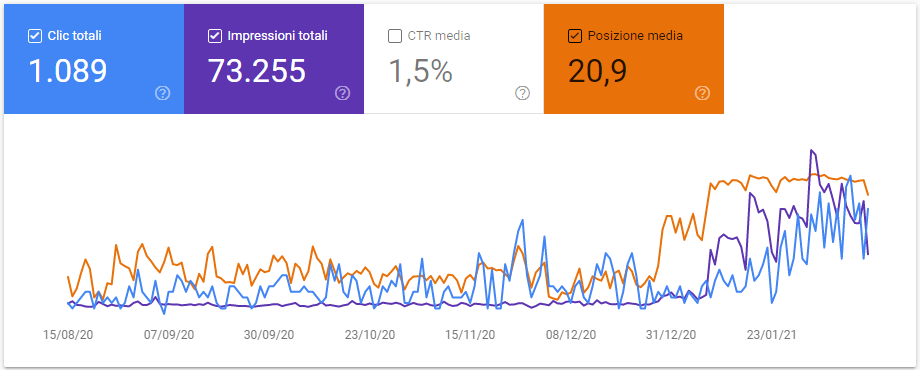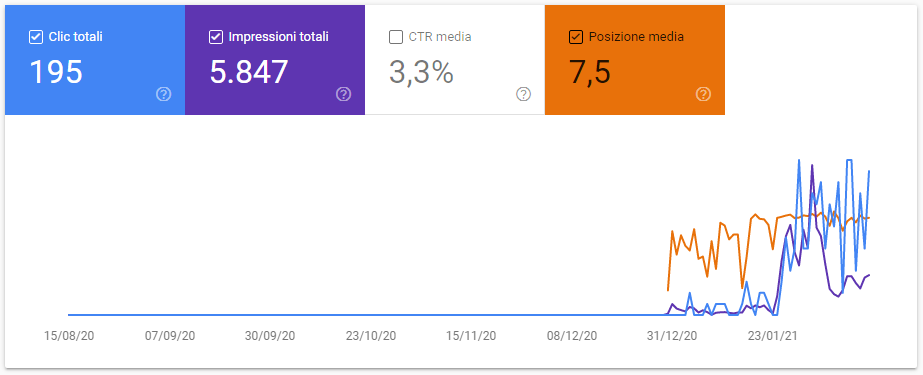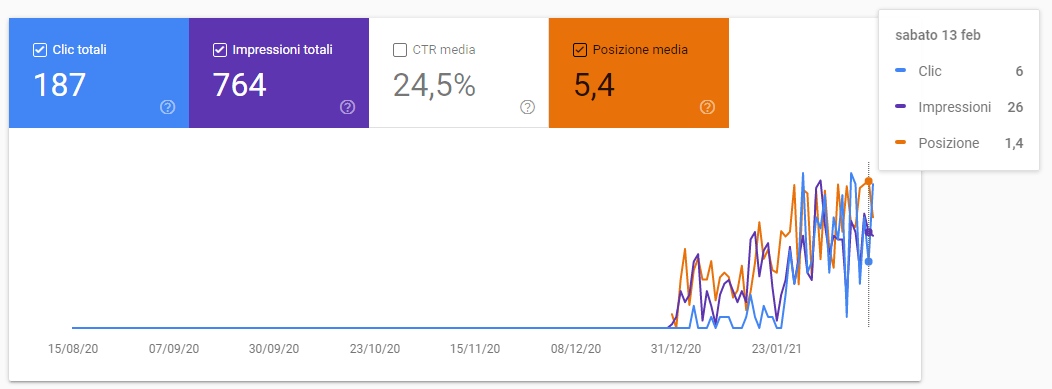- Home
- Categorie
- Digital Marketing
- SEO
- SEO semantica come non l'avevo mai vista mettere in pratica
-
@kal sarebbe interessante, magari @MaxxG potrebbe farlo, una mappa concettuale degli argomenti e delle azioni che ha fatto.
E poi ci potremmo fare una live

-
mi aggiungo, seguo e la userò al posto di contare le pecorelle, vediamo quanto mi risulta digeribile, ma la l'idea del live secondo me spacca, dai @giorgiotave
-
Sto rileggendo l'articolone.
Altro passo interessante:
And, in this SEO Case Study, the “header menu” and “footer menu” didn’t exist. The sidebar had only 5 links that point to the latest articles. Average Link number for a web page was just 10. 5 of them were in the sidebar, one is at the footer for homepage, one is in the header for homepage and 3 of them are in the main content with contextual relevance within a topical hierarchy.
Che conferma quanto ho detto sopra.
L'autore ha lavorato sostanzialmente su un numero RISTRETTO di link in pagina, questo si riflette in quote maggiori di pagerank passato per ciascun link.
E l'intera gerarchia di link interni di fatto è affidata alle relazioni ORIZZONTALI tra le pagine.
Mi è fra parentesi venuto in mente che di questa cosa ne avevo parlato, seppure di striscio, quando presentai PIKAC.
Quindi bene e avanti.
Ora penso proprio che farò una scansione dei siti presentati come oggetto di studio e proverò a rappresentare il link graph.
Cosa mi aspetto: mi aspetto che la modulairty sia molto chiara e limpida e si creino dei cluster di pagine anche queste molto chiare e limpide.
Stay tuned...
-
Questo è il grafo di link interni di interingilizce.com

-
E questo è invece Getwordly.com

-
Commento a caldo: me li aspettavo più ordinati, c'è un certo fattore di caos qua dentro, soprattutto su Getwordly.
Mi prenderò sicuramente del tempo per studiarli un poco ma di primo acchito davvero non mi sembra nulla di davvero trascendentale.
Probabilmente all'atto pratico tutto il "SEO" di cui parla l'autore si può riassumere in
-
una buona analisi keywords
-
un buon piano editoriale
Che si traducono in:
-
una buona comprensione degli argomenti di interesse
-
una buona pianificazione della copertura completa degli stessi, facendo un uso "saggio ma ingenuo" dei link orizzontali
1 Risposta
-
-
Per chi volesse curiosare in autonomia nel link graph da cui ho tratto i due grafici sopra, eccovi il file .gephi da scaricare:
https://drive.google.com/file/d/1pie_lT1dl47p2Y1_UQfF587sbsDwK-Qw/view?usp=sharing
-
@kal ha detto in SEO semantica come non l'avevo mai vista mettere in pratica:
una buona analisi keywords
il focus dell'autore, con cui ho avuto modo di confrontarmi sull'uso che fa di alcuni tool (inLinks in particolare) è un po' diverso, e qui dovrebbe stare il cambio di paradigma (al di là dell'aver rinunciato a top e footer menu, o a qualsiasi ottimizzazione on page attraverso metatag, o alle prestazioni del sito e del server, o all'aver "scolpito" - concetto superato lo so - il pagerank in modo certosino), ossia (e mi limito a citare due brevi passi):
“Focus on Entities, not keywords.”
For this SEO Project, I have educated the authors with NLP Terms, and told them why we are writing what reason within which style. I have taught them the difference between a query and an entity along with what I mean within the article briefs while determining the headings, heading vectors, annotation texts, anchor texts, methodology, and structure of sentences. And, I taught them where to use lists, where to use tables, where to use which “types of entities” and with which type of sentence structure.
Therefore, while satisfying a certain search intent group in a certain subject within a certain context, all relevant entities must be associated with the detailed information, attributes and facts they contain within a context. At the same time, covering all relevant entities with the most accurate information by providing a wide Topical Coverage in a Topical Graph will provide Topical Authority for the relevant Brand-entity.
Entity type matching is the matching process of types of terms in the query and in the candidate answer passage. If the entity types are matching, there is a strong probability that the candidate answer passage is an answer for the processed query.
At this point, many different concepts that we handle such as Content Format, Part of Speech Tag, Entity Connections and Attributes, Dependency Tree, Question Generation from Content come into play.
Entity Type and Entity Attributes in a query will be matched with content with the correct content format by including the relevant Entities in the specified Context and the specified Heading Vector, with the most understandable Dependency Tree."Quello che io trovo interessante è proprio cercare di ragionare in termini di entità e includerle nel proprio schema con le property "about" (per le entità principali e quindi il main topic della pagina" e "mention" per le secondarie. Valutare sempre, tramite API come Google estrae le entità (per esempio è più facile che riesca se si usano iniziali maiuscole, strano ma vero).
E ancora "For Sources with Topical Authority, Google uses the term “Seed Sites” or sites with a high “SourceRank” in their patents. These sites are authoritative enough to be a source for the Semantic Search structure created by Google itself, for example Wikipedia."
Ecco cercare di diventare "seed site" per alcune entità, ancora non riconosciute da google magari, può essere di estrema importanza e per questo connettere le proprie entità nel Linked Open Data Cloud, magari "agganciandosi" a db che già ne fanno parte.
Credo che questo approccia possa essere premiante nel lungo periodo.
2 Risposte
-
@maxxg ha detto in SEO semantica come non l'avevo mai vista mettere in pratica:
e includerle nel proprio schema con le property "about"
Aspè, dove hai visto che ha utilizzato Schema?
Io ho guardato i sorgenti dei due siti e c'è lo Schema di Yoast e basta.
Non c'è nessun markup semantico che vada oltre il default.
Quello che riporti qua:
@maxxg ha detto in SEO semantica come non l'avevo mai vista mettere in pratica:
I have educated the authors with NLP Terms, and told them why we are writing what reason within which style. I have taught them the difference between a query and an entity along with what I mean within the article briefs while determining the headings, heading vectors, annotation texts, anchor texts, methodology, and structure of sentences. And, I taught them where to use lists, where to use tables, where to use which “types of entities” and with which type of sentence structure.
Therefore, while satisfying a certain search intent group in a certain subject within a certain context, all relevant entities must be associated with the detailed information, attributes and facts they contain within a context. At the same time, covering all relevant entities with the most accurate information by providing a wide Topical Coverage in a Topical Graph will provide Topical Authority for the relevant Brand-entity.
Entity type matching is the matching process of types of terms in the query and in the candidate answer passage. If the entity types are matching, there is a strong probability that the candidate answer passage is an answer for the processed query.Alla fine è un modo roboante e con mille giri di parole per dire:
"ho insegnato a scrivere in modo completo e definito su un determinato argomento che io gli ho indicato"
Cioè, quello che si insegna a scuola quando si fanno i temi di italiano. Soltanto con il 200% di tecnicismi in più.
Penso di non esagerare se dico che ottengo gli stessi risultati dicendo al redattore "mettiti nei panni del lettore che atterra dai motori di ricerca e scrivi di questo argomento meglio che puoi. Il tuo obiettivo deve essere far sì che il visitatori pensi: HO TROVATO QUELLO CHE STAVO CERCANDO".
Tutto il resto del discorso, sulle entità e tutto il resto... si crea da solo. Sono metapippe.
Un bravo redattore le "entità" te le cita correttamente nel testo in modo naturale. Non c'è alcun bisogno di creare una sovrastruttura.
Ho giusto giusto un esempio sotto mano di un caso reale in cui ho fornito l'intento di ricerca alla redattrice e le ho detto: "guarda chi si posiziona per quel termine di ricerca e produci un contenuto MIGLIORE. Vai e spacca il mondo."
La redattrice ha dato il meglio di se ed ha scritto veramente un ottimo articolo.
E nel giro di un mese eravamo primi per una query anche abbastanza competitiva, evergreen e perfettamente profilata sul cliente. Il cluster di query associato alla pagina fa circa 5-6K ricerche/mese secondo GSC. E sulla query principale ho CTR vicini al 40%...
Per quel che vale

GSC intero sito

GSC singolo articolo

GSC singolo articolo singola query principale

Rinse and repeat seguendo il piano editoriale, quello che ottieni è grosso modo quello presentato dall'autore dell'articolo.
Sarò naif, ma veramente secondo me siamo al punto in cui MENO ne sai di SEO e più sei in grado di produrre un contenuto efficace sui motori di ricerca.
Il ruolo del SEO secondo me è tempo che si ritiri dal contenuto e rimanga a fare la strategia...
-
@maxxg ha detto in SEO semantica come non l'avevo mai vista mettere in pratica:
o all'aver "scolpito" - concetto superato lo so - il pagerank in modo certosino)
Ah, anche sta cosa io la contesto un pochettino.
Non ha scolpito granché "in modo certosino". Sicuramente la scelta di mettere pochi link in pagina è interessante.
Ma a parte questo, il resto è stato fatto un po' "alla cazzo" e si vede benissimo guardando il link graph
